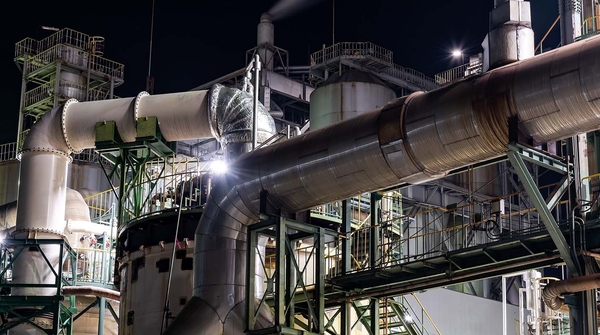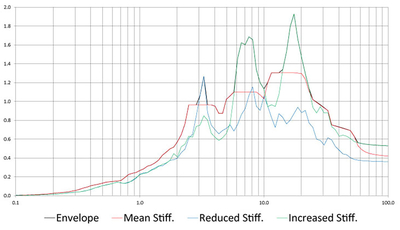Where is the SSI needed?
- Earthquake verification of dams
- Verification of nuclear power plants, their components and pipe systems for earthquakes
- Propagation calculation of vibrations, e.g. as a result of pile-driving work
Our tool - ACS SaSSI
In the field of soil-structure interaction, ACS SaSSI is currently the leading software package from Ghiocel Predictive Technologies Inc.
Generation of spectrum-compatible time histories
Earthquake loads are given for a location in the form of free-field excitations. Time histories are required for the SSI calculation. These can either be generated artificially or derived from real earthquake events.
SSI calculation model
- Building model with the most important fixtures and soil near-zone (HOUSE)
- Soil layer model of the upper soil layers and the infinite half-space (LAYER)
House model
Modeling of the building and possibly the near-ground area. The level of detail of the FE model for the SSI calculation significantly determines the calculation time. Subsequent transfer of the calculation model and the boundary conditions from the SSI to ANSYS with the option of model refinement and stress evaluation.
Soil layer model
Soil parameters per soil layer up to the half-space:
- Layer thickness
- Weight
- S-wave velocity
- P-wave velocity
- Attenuations
Iteration of the dynamic soil properties:
- Shear modulus
- Damping
SSI calculation
| SITE | SV waves in X direction SH waves in Y direction P-waves in Z-direction |
| POINT | Frequency-dependent stiffness (impedance) |
| HOUSE | Mass and stiffness matrix |
| ANALYS | SSI calculation |
Spectrum processing
- RSS superposition of the responses in each spatial direction due to the excitations of the individual spatial directions
- Averaging of the spectra from the excitation with different time histories
- Capping of peaks
- Broadening of the spectra
- Enveloping the calculations of different ground models


